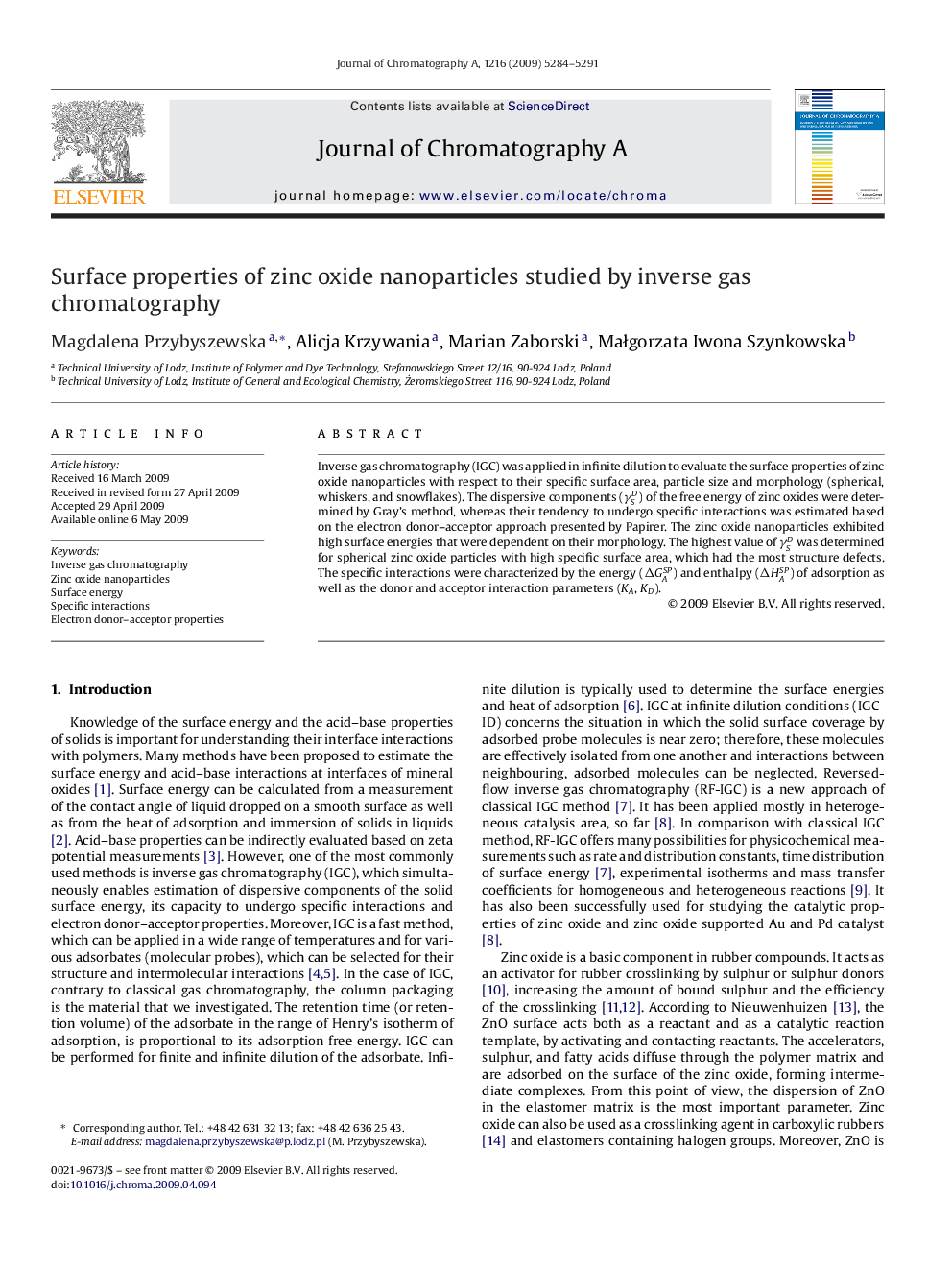| کد مقاله | کد نشریه | سال انتشار | مقاله انگلیسی | نسخه تمام متن |
|---|---|---|---|---|
| 1206156 | 965221 | 2009 | 8 صفحه PDF | دانلود رایگان |

Inverse gas chromatography (IGC) was applied in infinite dilution to evaluate the surface properties of zinc oxide nanoparticles with respect to their specific surface area, particle size and morphology (spherical, whiskers, and snowflakes). The dispersive components (γSD) of the free energy of zinc oxides were determined by Gray's method, whereas their tendency to undergo specific interactions was estimated based on the electron donor–acceptor approach presented by Papirer. The zinc oxide nanoparticles exhibited high surface energies that were dependent on their morphology. The highest value of γSD was determined for spherical zinc oxide particles with high specific surface area, which had the most structure defects. The specific interactions were characterized by the energy (ΔGASP) and enthalpy (ΔHASP) of adsorption as well as the donor and acceptor interaction parameters (KA, KD).
Journal: Journal of Chromatography A - Volume 1216, Issue 27, 3 July 2009, Pages 5284–5291